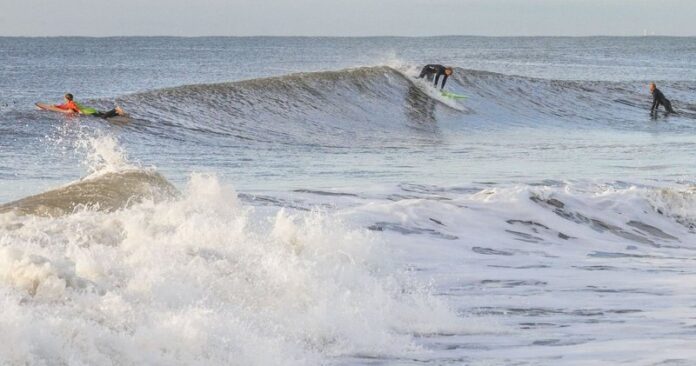An uncommon number of deaths on the East Coast this summer have been caused by a “flesh-eating” bacteria, prompting federal health officials to warn people to take precautions.
The bacteria responsible for these fatalities, Vibrio vulnificus, most commonly causes infections in states that border the Gulf of Mexico. But warming waters have led to a rise in cases up north, according to the U.S. Centers for Disease Control and Prevention.
There are about 12 Vibrio species that can infect humans, including Vibrio vulnificus, which can cause life-threatening infections. These species live in coastal waters, including brackish water. Most Vibrio infections are caused by eating raw or undercooked shellfish, particularly oysters. But unlike other species, Vibrio vulnificus is transmitted primarily by open wounds coming in contact with coastal waters.
About 150 to 200 Vibrio vulnificus infections are reported to the CDC each year and about 1 in 5 people infected die, sometimes within a day or two of becoming ill. Though infections can be treated with antibiotics in some cases, many people infected require intensive care or limb amputations.
This summer, the bacteria has caused three deaths in North Carolina, two in Connecticut and one in New York. There have been several severe cases reported by East Coast states, too. That prompted the CDC to issue a health advisory last week.
“The sky is not falling, but be careful, pay attention and take it seriously if you have an infection and get it treated,” Dr. Rita Colwell, a microbiologist and marine expert at the University of Maryland and Johns Hopkins University, told ABC News.
Most Vibrio species cause diarrhea, or possibly stomach cramps, nausea, vomiting, fever and chills. But Vibrio vulnificus infections can lead to necrotizing fasciitis — a severe infection that causes the flesh around an open wound to die. This is why Vibrio vulnificus are sometimes referred to as “flesh-eating bacteria,” although other types of bacteria can cause necrotizing fasciitis as well.
Vibrio bacteria thrive in warmer coastal waters, particularly in May through October, and in lower salt marine environments like estuaries.
The various Vibrio species cause an estimated 80,000 illnesses each year in the U.S. Vibrio vulnificus infections are among the most rare, and historically have occurred in Gulf Coast states. But they increased eightfold along the East Coast between 1988 and 2018, with the northern geographic range increasing each year, according to the CDC. Infections in New Jersey are reported each year.
This summer, the U.S. has seen higher-than-normal coastal water temperatures and extensive heat waves – conditions that allow the bacteria to flourish. Plus, extreme weather events linked to climate change, including floods and severe storms, can force coastal waters inland, exposing people to waters that may carry Vibrio bacteria.
“The chances of getting it are increasing because it’s spreading geographically and in larger numbers because of the warmer waters,” James Oliver, a retired professor of microbiology at the University of North Carolina, told NBC News.
Though most Vibrio vulnificus infections are caused by open-wound exposures, about 10% occur by eating shellfish. Oysters and other shellfish feed by filtering water in which Vibrios live, and therefore accumulate the bacteria in their tissues. The bacteria can enter the digestive tracks of people that eat them raw or undercooked.
Here are symptoms and prevention tips from the CDC:
Symptoms of Vibrio infections
People with a Vibrio vulnificus infection may experience:
•Watery diarrhea, stomach cramping, nausea, vomiting and fever
•In the case of a bloodstream infection, people may experience fever, chills, dangerously low blood pressure and blistering skin lesions.
•In the case of a wound infection, which may spread to the rest of the body, people might experience fever, redness, pain, swelling, warmth, discoloration and discharge.
How to prevent Vibrio infections
• People with open wounds or cuts should stay out of saltwater and brackish water.
• Anyone who get a cuts while in salt or brackish water should leave the water immediately.
• Open wounds or cuts that come in contact with saltwater, brackish water or raw/undercooked seafood should be washed with soap and water and completely covered with a waterproof bandage.
• Cook raw oysters and other shellfish before eating them.
• Wash hands with soap and water after handling raw shellfish.
• Seek medical attention immediately for infected wounds.



